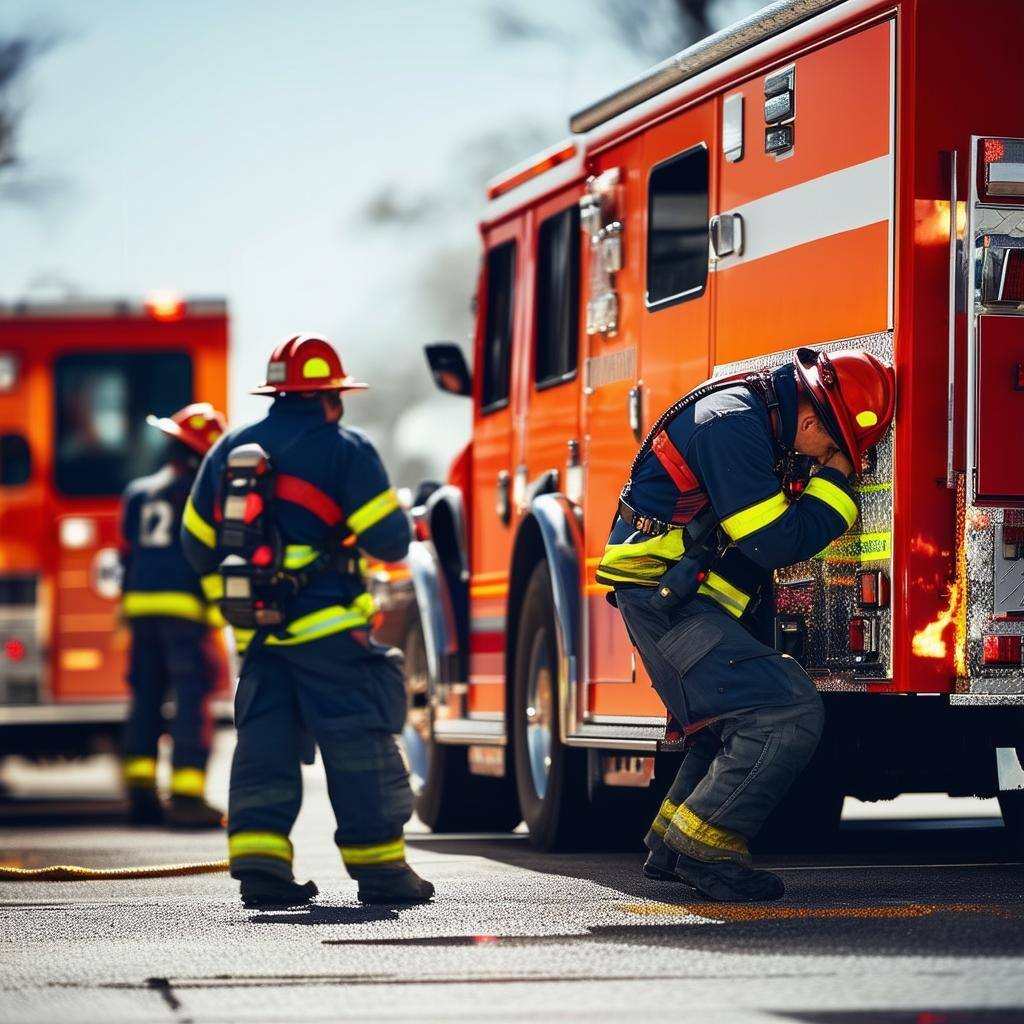The fire and EMS industries are high-pressure fields that demand exceptional physical, emotional, and mental endurance. Emergency responders often face traumatic situations, long shifts, and unpredictable work hours. While this is the nature of the job, it also places individuals at a heightened risk for burnout—a state of emotional, mental, and physical exhaustion caused by prolonged stress.
Understanding Burnout
Burnout manifests as a combination of exhaustion, depersonalization (a sense of detachment from one’s work or colleagues), and a feeling of reduced personal accomplishment. For firefighters and EMS personnel, burnout not only impacts their well-being but can also hinder their ability to perform at the level their roles demand, compromising safety and effectiveness on the job.
Causes of Burnout in Fire and EMS
Several factors contribute to the high burnout rates in these industries:
- Trauma Exposure: Firefighters and paramedics frequently encounter life-threatening situations and emotionally draining incidents, from severe accidents to fatalities.
- Long Shifts and Sleep Deprivation: Long, irregular shifts, often stretching to 24 hours or more, leave little room for rest and recovery.
- Emotional Strain: Emergency responders often carry the emotional burden of their calls, especially when outcomes are unfavorable, leading to compassion fatigue.
- Administrative Pressures: In addition to emergency responses, many professionals face growing paperwork, increasing demands from supervisors, and pressures to meet performance metrics.
Signs of Burnout
Burnout doesn’t happen overnight. Recognizing the signs early is essential to taking preventive steps:
- Chronic fatigue, even after resting
- Decreased job satisfaction or sense of purpose
- Increased cynicism or detachment from work and colleagues
- Emotional numbness or irritability
- Physical symptoms like headaches, digestive issues, or frequent illness
- Declining job performance
Strategies to Combat Burnout
Prioritize Mental Health Resources Fire and EMS agencies should create an environment where mental health is openly discussed and supported. Regular access to mental health professionals, peer support groups, and Employee Assistance Programs (EAP) can provide vital outlets for employees to talk about their struggles without fear of stigma. Some agencies have begun to integrate mental health check-ins as a routine part of debriefing after traumatic calls.
Training on Stress Management Providing training on how to manage stress can empower personnel to recognize early warning signs of burnout and cope more effectively. Techniques like mindfulness, controlled breathing, and progressive relaxation can be taught and practiced. Encouraging exercise, proper nutrition, and good sleep hygiene also helps build resilience to stress.
Flexible Scheduling and Recovery Time Agencies must find creative ways to provide adequate time off and limit shift lengths to avoid excessive fatigue. While emergencies are unpredictable, balancing on-duty time with proper rest and recovery is crucial for long-term sustainability in the profession.
Peer Support Systems Peer support is a powerful tool in the fight against burnout. Firefighters and EMS personnel are more likely to open up to colleagues who understand the unique challenges they face. Establishing formal peer-support teams and regular debriefings after high-stress calls allows professionals to discuss their experiences and receive feedback from others in the same field.
Encourage Open Communication Leadership should foster an open-door policy, where personnel feel comfortable expressing their concerns without judgment. Regular check-ins with leadership can help identify early signs of burnout and create opportunities for intervention. Agencies should ensure that line officers and supervisors are trained to recognize burnout symptoms and provide the support needed.
Focus on Purpose and Accomplishment Often, burnout occurs when individuals lose sight of the impact of their work. Reminding firefighters and EMS personnel of their vital role in the community can reignite passion and job satisfaction. Whether it’s through recognizing small victories or publicly honoring individual contributions, reconnecting responders with the meaningful aspects of their work can be a powerful motivator.
Conclusion
Burnout is a serious issue in the fire and EMS industries, but it doesn’t have to be inevitable. By proactively addressing the causes of stress, providing mental health resources, and fostering a supportive, open environment, agencies can help their personnel remain resilient. The well-being of emergency responders directly impacts the safety of the communities they serve—combating burnout is not just about protecting workers, it’s about preserving the quality of service they provide.
By investing in the mental, emotional, and physical health of firefighters and EMS personnel, agencies can ensure that their teams are equipped to handle the demands of the job while staying healthy, engaged, and passionate about their critical roles.




Leave A Comment